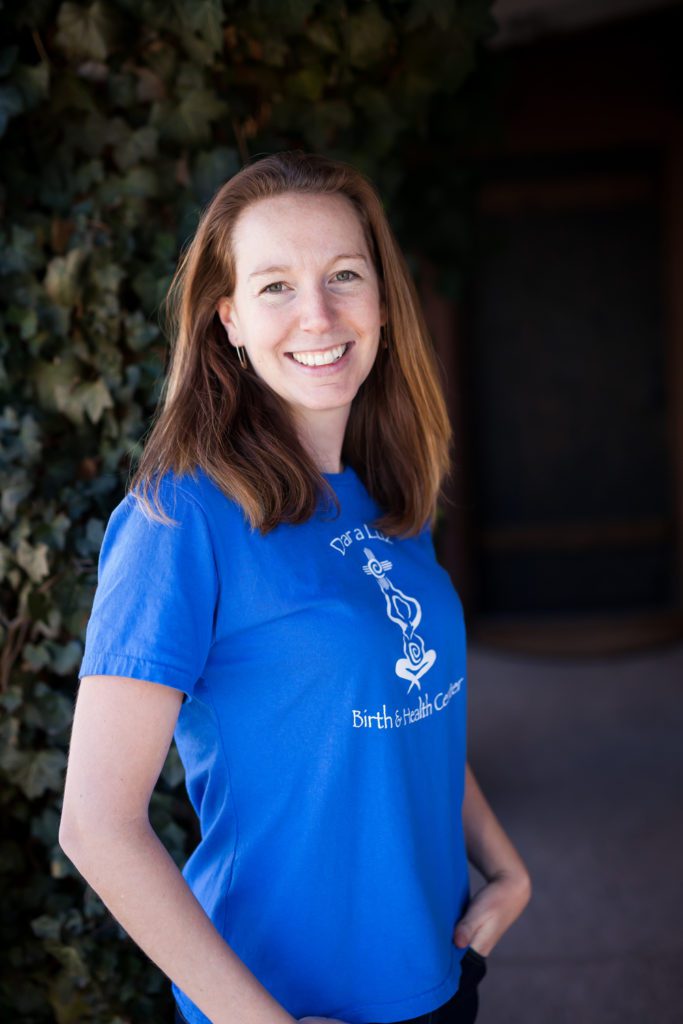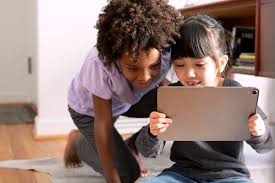Internet Safety For Kids
by Erica Deerinwater, Billing Specialist
Today, many families use technology to teach as well as entertain our kids. We all have our goals on how much our kids will be in front of a screen, and sometimes that limit is stretched for a multitude of reasons. My kids are now 10 and 12, and school, friends, and entertainment would not be possible without the internet and screens. Whether you are strict or lenient with the amount of time in front of a screen, WHAT is on that screen and WHO has access to your child is more important now than it’s ever been.
It can feel overwhelming to venture into the landscape of keeping the internet safe for our children. You may lean toward just not letting them on at all, or only while you are with them. What I’ve learned as they age is that it’s important for them to have some privacy and freedom to explore on their own, just like free play. My son has learned so many coding and tech skills from being on Minecraft, or watching others on YouTube show him how to create and build a whole world of his own. I wouldn’t want to take away that part of his life that he is drawn to and enjoys so much. But to allow that freedom, there have to be rules, fences, and limits. I’m not letting him run around in the street or go to a friend’s house without permission. So, we have set up some in house limits to what our kids are exposed to.
How are they getting on a device?
One of the first things I recommend may not be popular, but I think it’s important. Don’t give YOUR phone/tablet to your child. My phone is not limited, one click and they can search anything, and anything can be downloaded, or allowed when I’m looking away for a couple minutes. Kids should have their own devices that are secure, age appropriate, and theirs to take care of. They will need to learn to charge it, keep it off the floor, not eat on it like a plate, etc. The sooner they have their own access on their own device, the safer they will be, and the more control you will have on their exposure. There’s tons of options, and many are affordable — from an old phone you have lying around, to an Amazon Fire Kid tablet, or an iPad. Research and figure out what will work for your family.
The next thing I recommend is getting your kids a Gmail account. You can set up a Gmail account for children under 13 through Family Link, and it’s really intuitive. This option is 100% free, and a great first step. Family Link allows you to supervise your kid’s Google account, view your child’s smartphone activity, manage their apps, set screen time limits, and even track their location.
For the most part, Gmail will be the same for children as it is for adults. There are only a few Gmail features that aren’t available to children under 13.
- Ads: Google won’t serve your child ads.
- Automatic forwarding: Kids won’t be able to automatically forward their emails to another email address.
- Gmail offline: Children can’t read, send, or search their Gmail emails if their device isn’t connected to the internet.
- Spam: Emails that Google deems spam won’t get delivered.
One very important thing to remember
When helping your child create their username, make sure they don’t accidentally include any potentially identifying information. This can include things like their school mascot, the year they were born, or their whole name. Keeping your child’s user name non-personal will help prevent strangers from learning key details about them.
- Example of a BAD username: JoshuaB2012
- Example of a GOOD username: Fortnitefan5738
Controlling access
What Family Link cannot control is if your child is not signed into their Google account when they are online (they can use different browsers, for example). Chromebooks are great at controlling which user can do what, iPhones/Androids can be turned into kid mode, and Apple/PCs can require sign in. However, if your child can use a Guest or non-limited access on any device, you will not know what they are seeing.
When your kids are of the age that they can start finding workarounds, you’ll need to upgrade to an option that usually involves some investment (unless you are SUPER tech savvy already). Several of the virus/malware scanners have additional options to install on any device that will monitor and block content and sites that are inappropriate (and we always have our virus scanners up to date and scanning regularly, right?)
There are some upgraded routers where you can assign certain devices to certain people in the home. For example, my personal cell phone has unlimited access, but the living room computer has screen time limits and site restrictions unless I release them. One recommendation is Circle from Disney. There are different subscription options of varying levels. Research which one that your family can grow with, so that you can alter the allowable content as they age.
Another option is utilizing a service that can do all of the above, like Bark. Bark scans everything from web searches to text messages, sets screen time limits and will send the parent alerts to allow an app, or if there is something concerning the child is looking at or saying to friends.
Don’t let AI do it all for you.
As soon as your child starts accessing the internet, talk to them about what they are reading and watching, and who they are communicating with online – and keep the conversation going as they grow older. Ask your child what sites they visit or apps they use, write a list, and look at them together. Talk to your child about what you think is appropriate, and remind them that this may be different for other parents and their children.
By starting to talk about internet safety early on, you can open the lines of communication with your child about what you both are comfortable with. Kids that feel they can talk to their parents about things they don’t understand without getting in trouble will be more likely to ask questions, or share about cyber bullying they are encountering.
It’s not just about the kids
Every picture and personal detail that is posted and shared on social media and the internet contributes to someone’s digital footprint. The big risk with this is that once information is shared publicly, it can be used in ways you may not expect and cannot control. You should also assume that anything that is put online is permanent.
You may think to yourself, my child doesn’t have social media, so I don’t have to worry about it. But, what do you post about your children? The pictures from the first day of school are great, but in that picture, does it disclose the school your child goes to, their grade, and their teacher? That’s more than enough information for a predator to locate your child, or begin the process of identity theft. Add that to the pictures on their birthday, their name (attached to your last name) and going all the way back to when they were born, people can gather all of that information from searching a Facebook account. Post sparingly about your children, if at all, and make sure your privacy settings are as limited as possible.
This can feel overwhelming, but remember that you don’t have to set all this up at once. Start by watching what your children are watching, ask them to show you what they are interested in. Suggest other ways to learn things, through safer apps or offline options. I’ve included some options below, but there are so many! Ask your teachers and librarians what they recommend, talk to parents at PTA meetings, and find what works for your family!
Learning Apps Your Kids Will Love
NASA app: If your kid dreams of becoming an astronaut or engineer, this is a must-have. The NASA app provides out-of-this-world photos, up-to-date news, live streams of the International Space Station, and the constantly updating outer-space content they crave.
Socratic by Google: Perfect for older children, this learning app — powered by Google’s powerful AI — helps students figure out problems. Ask Socratic a question and the app will find the best online resources for kids needing help with math, history, and more.
Quizlet: This incredible flashcard app has helped more than 50 million kids over the years study smarter, not harder, for tests and quizzes. Your child can make their own custom study aids or save time by choosing from existing flashcards made by other students. (My 12 year old daughter’s teachers frequently assign this for downtime or study, but it’s fun!)
Khan Academy: This non-profit provides its learning app to help kids improve no matter what they’re studying. It will keep kids interested and informed with thousands of interactive quizzes, exercises, videos, and articles.
Stop Motion Studio: Your kid will be able to bring their toys and other inanimate objects to life with the Stop Motion Studio app. With its easy-to-use controls, they’ll also learn the basics of movie making and editing.
Here’s to safe scrolling!
Erica

Erica is a native New Mexican who has worked with tech and the medical community for most of her professional career, from medical filing to front office to providing technical training to nurses and doctors.
Her first child was born by cesarean, and her second child was born naturally at Dar a Luz in 2011. She then became the certified professional biller and coder for the birth center. She also does insurance verification, submits prior authorizations, and creates client financial agreements.
She enjoys helping Dar a Luz clients make the most of their insurance coverage, and feels so very lucky and honored be part of such an amazing group of women and the birth center’s mission.





